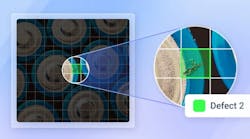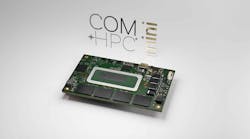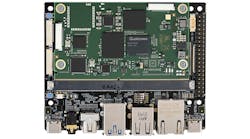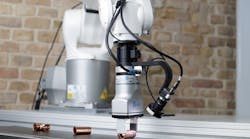A number of microbeam techniques have been developed for the analysis of geological materials. One of these, electron probe microanalysis (EPMA), operates by bombarding a sample with an electron beam and collecting emitted x-ray photons. Because the wavelengths of the x-rays are characteristic of the sample under test, the composition of the sample can be identified by recording these spectra.
Electron probe microanalysis can involve the analysis of submicron particles and the quantifying of trace elements. In designing these systems, companies such as Cameca (Courbevoie, France; www.cameca.fr) recognize that the applications require accurate positioning of the analysis beam spot and good stability to avoid effects of instrumental drifts during measurements that may last for several minutes.
In many EPMA experiments, it is useful to reduce the amount of current in the beam, letting the user analyze trace chemical elements that may only be detected under such conditions. Unfortunately, reducing the amount of beam current results in noisier images that must be removed. One technique to perform this function is Kriging. Named after South African mining expert Prof. D.G. Krige by the late Prof. Georges Matheron of the Ecole des Mines de Paris (Paris, France; www.ensmp.fr), the technique uses linear estimators for local interpolation of data.
"In EPMA systems, this technique allows the amount of current in the beam to be reduced, letting the user analyze trace chemical elements that can only be detected under such conditions," says Gervais Gauthier of ADCIS (Hérouville-Saint Clair, France; www.adcis.net), a company that provides a Kriging toolkit for its Aphelion imaging software package. "Reducing the amount of current also implies more noise in an image, which can be removed using Kriging.
Kriging is based on the assumption that images can be treated as a set of regionalized variables, changing in a continuous manner from one location to the next. Thus, points that are near each other have a degree of spatial correlation, and points that are widely separated are statistically independent. To perform the Kriging function, a variogram is first constructed from data in the image.
To determine the amount of correlation at any specific point, the image is spatially shifted or translated and the correlation between pixels in the original and translated image is measured. At small separation distances, this variance is small because points that are close together have similar values. After a certain level of separation, the variance in pixel values becomes somewhat random, and the model variogram flattens out to a value corresponding to the average variance.
"The variogram helps to show any periodicity in the image," says Gauthier. "Noise is nonperiodic and does not present any autocorrelation except where the image is translated by zero pixels. But the variogram of a white-noise image is a function that is positive when the image is translated and equal to zero elsewhere. It is possible to remove the noise by modeling the variogram either manually or automatically and applying this operator on the original image.




